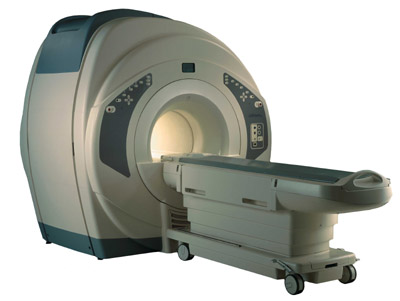
In other parts of the world, biosolids (human waste) from sewage treatment plants are treated and used as sustainable agricultural fertilizer. Research the pros and cons of this method and take a stand on whether this can be a realistic alternative to our current agricultural practices. Who are the potential stakeholders in this issue? Are we influenced by the western view of human waste as an unsanitary and disgusting nuisance?
So, human waste is something that occurs within everyone. If you're a boy, you produce human waste. If you're a girl, you too produce human waste. It is something that is natural and something human nature calls for. But once you have flushed that toilet, where does it all go? Does it all pile up on a large piece of land 534563453 miles away from human civilization? Or does it build up on the bodies of water we see today? As individuals of today's modern world, I feel that everyone should be educated on how waste water is cleaned, and how biosolids are treated and what they are.
Biosolids. What's that?:
 The same question appeared in my mind as I read the topic of this blog. To be all descriptive and what not, biosolids are basically the nutrient-rich solid organic matter recovered from the treatment of domestic sewage in a waste water treatment facility. Biosolids consists of essential plant nutrient and organic matter. When the biosolids are treated and processed, they can be recycled and applied as fertilizer to improve and maintain productive soils and stimulate plant growth.Biosolids can in addition fertilize parks and reclaim mining sites.
The same question appeared in my mind as I read the topic of this blog. To be all descriptive and what not, biosolids are basically the nutrient-rich solid organic matter recovered from the treatment of domestic sewage in a waste water treatment facility. Biosolids consists of essential plant nutrient and organic matter. When the biosolids are treated and processed, they can be recycled and applied as fertilizer to improve and maintain productive soils and stimulate plant growth.Biosolids can in addition fertilize parks and reclaim mining sites. The Water We Flush:
Waste water is not
 only the water you flush, but also the water that drains down the sink and down the shower. Waste water, which can also be referred to as "used" water, travels through a large series of underground pipes - it makes up Toronto's sewer system. The series of pipes travel to about 9,000 kilometre - to one of four waste water treatment plans.
only the water you flush, but also the water that drains down the sink and down the shower. Waste water, which can also be referred to as "used" water, travels through a large series of underground pipes - it makes up Toronto's sewer system. The series of pipes travel to about 9,000 kilometre - to one of four waste water treatment plans.Through the process of undergoing waste water treatment, solids, chemicals and other unwanted material is removed.In many larger waste water treatment systems, pre-treatment regulations require that industrial facilities pre-treat their waste water to remove many harmful contaminants before it is sent to a waste water treatment plant. For example; before water is put in to Lake Ontario, contaminants are first, simply removed. Waste water treatment facilities monitor incoming waste water, to ensure they are able to be recycled and are compatible with the treatment plant process. The job of treating waste water is not simple. Physical and chemical processes are used when removing the contaminants from the waste water.
In Toronto, there are four waste water treatment plants:
- Ashbridges Bay Wastewater Treatment Plant
-Highland Creek Wastewater Treatment Plant
- Humber Wastewater Treatment Plant
- North Toronto Wastewater Treatment Plant
These four individual plants all take part in meeting and/or exceeding all the standards required by the provincial and federal environement ministries. It is clear that Toronto depicts a small portion in the world that can actually afford the waste water systems. There are some countries that are unfortunate, and cannot afford clean water.
After learning about the treatment process "used" water goes through, it comes time when we separate the pros and the cons of using biosolids for agriculture. As of now, before doing any research I'd like to say; It's good the biosolids are being recycled, because that calls for less "garbage" and waste to be set on land that can be potentially used, but at the same time it's pretty gross. Knowing that corn was covered in someone else's waste make me sick....just a little. I feel many people are greatly influenced by the view of human waste as being a disgusting thing because all we are surrounded by is garbage. We have garbage days where people can have up to their bags of waste. We get a sniff of the gross garbage truck as it passes by. We see porter potty's filled with disgusting waste - how aren't we influenced? As of right now, I feel torn in between the pro's and con's but hopefully continuing with my reasearch will allow me to result in a final decision.
PROS:

The world we live in today does a good job of causing problems for mother nature and her natural way of growth. Humans add this and that to living things to suit the needs for themselves. They reduce the need for chemical fertilizer, therefore letting those little critters below the ground live happily. Biosolids have also shown an improvement in crop growth and yield as well as show a significant amount of nitrogen, phosphorus, which are necessary for crop production and growth.
These articles of solid waste which have undergone treatment absorb water very well - keeping themselves moisturized for quite a while. By having this said, when it comes time for dry seasons and weather, biosolid fertilizer will not wear out as easily has regular, non-recycleable fertilizers!
It is quite clear that biosolids are the most environmentally friendly soils around. It is much of a safer source of fertilizer due to its natural ingredients and lack of additional chemicals. It has also allowed for better growth of crops- meaning that gardeners and farmers will have an exceptionally great amount of vegetables and fruits.
CONS:
As I mentioned earlier before my research, biosolids are technically waste from other humans. This is somewhat of a turn of simply because I do not enjoy realizing that what I put in my mouth was grown in poo.
Now, although treated and well cleaned, I cannot help but think of what my food has grown it. I find this to potentially be a con in biosolids. Another con is that, although biosolids are treated they will always have odors. The smell can be additionally treated and reduced by a stabilization process or various types of methods. If not treated, the smell of this organic fertilizer can get to the point of being very smelly. As weather differs everyday, the odor of bisolid fertilizer changes too. During humid and hot temperatures; what your nose inhales can be very unpleasant.
In Conclusion:
I believe the pros outweigh the cons!
Therefore, I believe in the use of biosolid waste. The fact that biosolids are more environmentally friendly and is more natural allows me to believe that by the future, everyone should take part in using biosolids. I think I'll be able to eventually get over the fact the poo was used to eat that carrot I just popped into my mouth. If something helps the environment - I am all for it!
Potential Stakeholders?:
The government and farmers are who I believe have the power to use whatever fertilizer they please. The government would want what is best for their people, and farmers will use techniques they believe to be useful. Overall, I believe that everyone has their own ways of going about helping the Earth from the great damages it already faces, and if using bisolids is best for everyone, then so be it.
WORK CITED:
http://www.toronto.ca/water/wastewater_treatment/treatment_plants/index.htm
http://biosolids.org/docs/frequently%20asked%20biosolids%20questions.pdf
http://www.cwwa.ca/faqbiosolids_e.asp
http://pubs.ext.vt.edu/452/452-304/452-304.html











